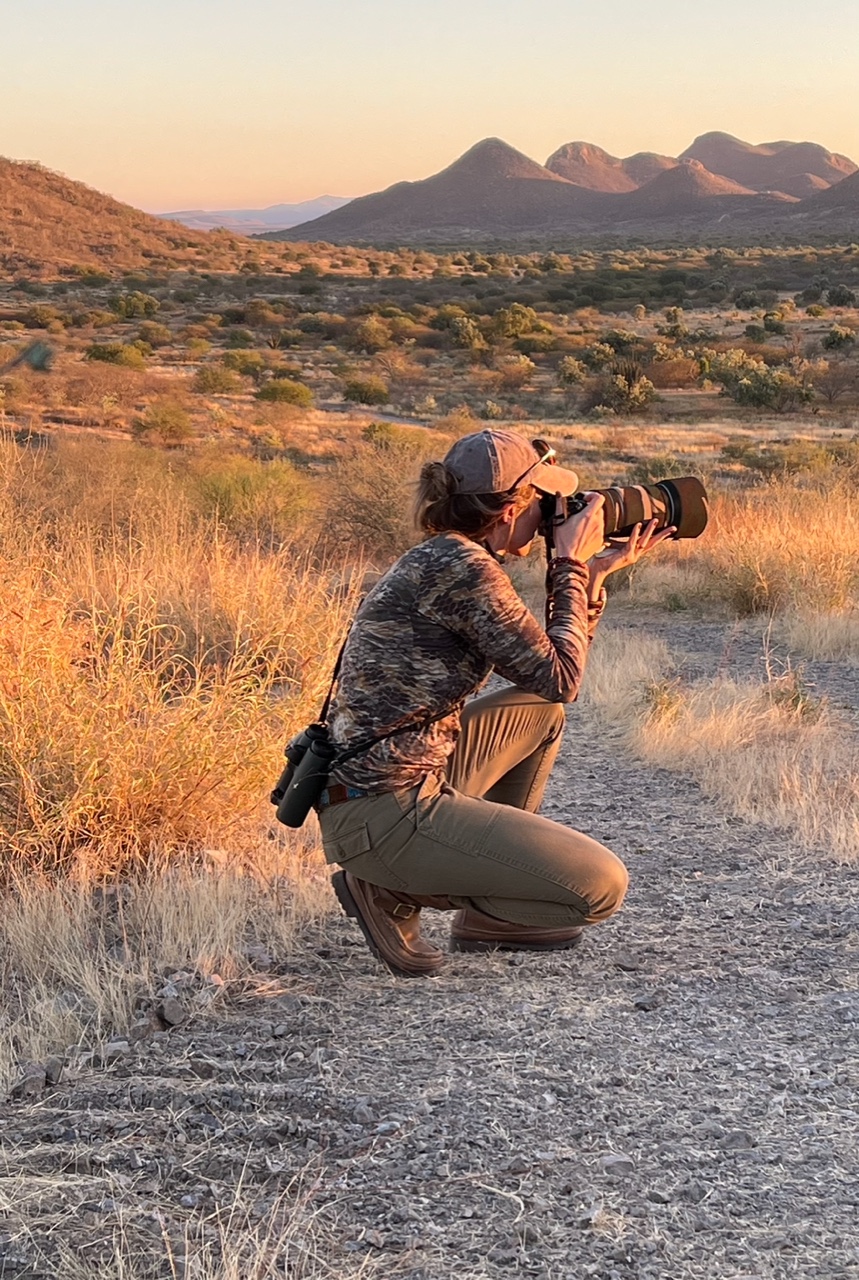Coues Deer in Old Mexico - By Brittany Hosmer Longoria
Tue January 25, 2022
With the advent of COVID travel restrictions, most adventurous hunters are hunkering down and looking for experiences closer to home. Across the southern border is a hunt worth traveling for; Coues Deer in Old Mexico. My husband, Ricardo, and I caught an early morning flight out of San Antonio, connected in Phoenix, and then a quick hop into Hermosillo, Mexico. The small plane was peppered with a few guys in technical camouflage, headed down to hunt for desert species like mule deer and bighorn sheep. Otherwise, the flight was sparsely filled with a handful of Mexican nationals. Customs was painless, as I don't travel with firearms, and Ricardo doesn't need to declare his bow equipment.
Upon arrival, we had a brief stop for a coke and a few tacos al pastor, which refueled my energy for the three-hour drive into the brush country. We traveled on narrow paved roads out of the buzz of Hermosillo through a few ranching communities. As we drove, tanned children in stained clothes waved from pickup beds of rusty trucks as they hauled fodder back to livestock. We passed vibrant fuchsia and coral-colored bougainvillea that climbed the chipped white plastered walls of dilapidated fenced homes. Old men in sun-bleached clothes and sandals sat outside storefronts in grungy plastic chairs, talking about the weather and women. Skanky stray dogs dashed across the street in front of us. It was incredible to believe, that little more than an hour's flight from the American border, and we were already deep within the heart of a different world.
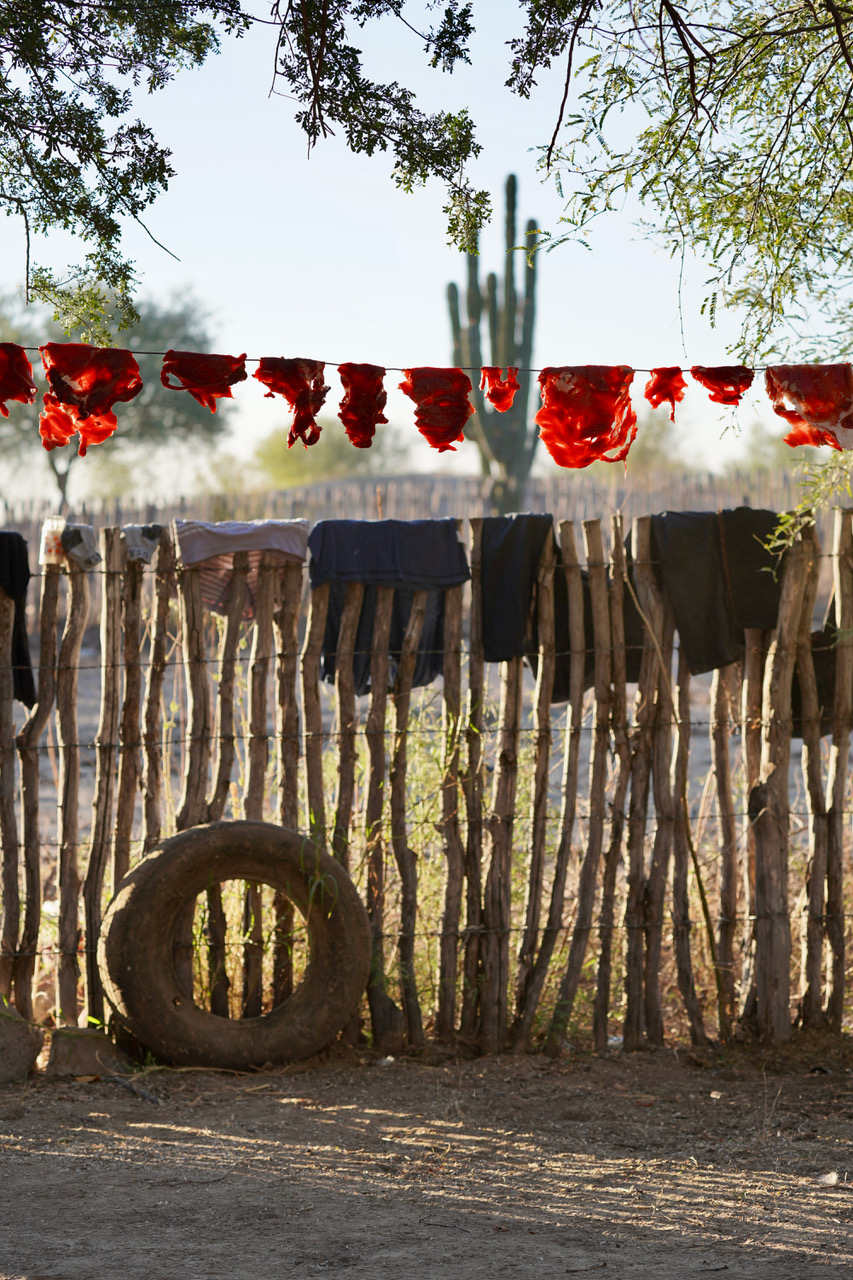
After two hours, we turned off the pavement and onto a single-track dirt road, lined with five strand barbwire fences brown and mangled with age. The road led towards the low rise of hills in the west, through a series of washed-out low water crossings and over corrugated cattle gates. We bounced along for another hour or so and turned left through a pair of freshly painted white and orange gate posts. The little ranch compound was the headquarters for a 50,000-acre cattle ranch where we'd be hunting. Surrounding the deer camp was a series of cattle chutes, corrals filled with calves waiting to be branded, and brick workshops filled with discarded feed sacks and old tires. Rusted-out trucks were turn on their sides for easier access to harvest spare parts and the vaquero's ranch house where an older woman hanged her wash out to dry. This was to be our deer camp for the next weeklong hunt.
Ricardo and I were welcomed to camp by two cooks and two hunting guides, Dave and Steven, of Ward Outfitters. Our dust-covered gear was hauled out from the pickup, and we were lead through the cool, dark corridors of the cinderblock-built hacienda. Seven, old-school taxidermy, Coues deer heads and a crudely tanned mountain lion skin were proudly displayed haphazardly on the living area's stucco walls above the multi-generations of the ranching family's portraits. The air smelt of warm corn tortillas and freshly mopped salito tile floors. One bathroom for the house was shared by all, and in the evenings, a generator hummed. Solar power supplemented the dim light of the interiors. The décor was modest, rustic, and comfortable – a typical Mexican ranch house, for my Mexican-born husband, everything was very nostalgic and familar. The evening was cold and dropped to about 35 degrees, we hunkered down in anticipation of the morning hunt.
The Coues deer have similar gray coloring to whitetail but are morphologically different with longer ears and tail and with a coppery-brown color on the top of their tail, with the classic white flag underneath. It is illegal to hunt does in Mexico; hence Ricardo and I were hunting for mature bucks that would hopefully make the Safari Club International Record Book minimum of eighty inches gross score. Coues deer look like small whitetails, about thirty-three inches at the wither and less than 100 pounds live weight. Despite their diminutive stature, the elusive Coues deer are sought after with a cult-like reverence for the challenge they present. The rugged terrain they inhabit are the thick, low scrubby oaks, Manzanita, mountain mahogany, juniper and piñon pine above 5,000 feet sea level. The ranch reminded me a lot of the Thabazimbi area of northern South Africa. Similarly, to the kudu antelope, the Coues deer have also earned the nickname “gray ghost” for their uncanny ability to seemingly vanish into the dense brush.
Coues deer are very civilized creatures. Generally, they sleep in and leisurely come out to water after 9:00 am, feed throughout the morning, bedded down in the early afternoon heat, and start to move again around 4:00 pm. The Mexican hunting day started about 7:00 am with an excellent ranch-style breakfast of chorizo, refried beans, fresh queso fresco cheese. We were settled into a blind by water by about 8:30 am. Hunting the Coues deer's patterns, we typically came back into the deer camp around 1:30 pm for lunch. After we indulged in a siesta, then we returned to the field around 3:30 pm to glass from the hills for the afternoon deer movement.
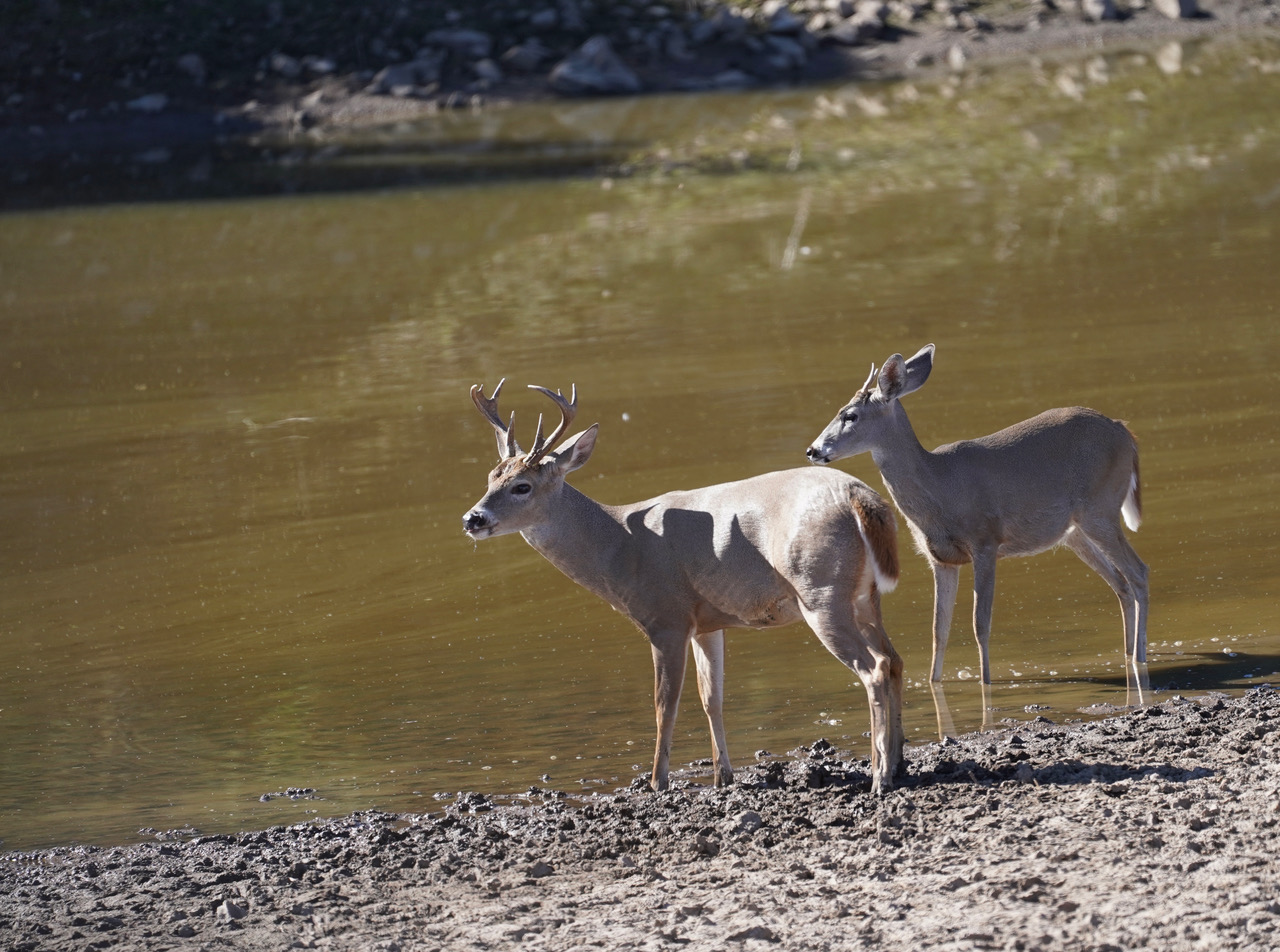
On the second morning, Ricardo and Steven started the day in a well-placed natural brush blind made from fresh-cut grass and branches to break up its shape. The deer began to trickle out of the brushy, dry, winter vegetation to feed on the new green growth at the pond's regressed water line. Does and small bucks mingled about at between twenty-five to forty yards away, and further across the dry lake bed, completely unbothered—as many as 50 deer at any given moment. Around 11:00 am, a heavy, old eight-point buck emerged on the far side at about one hundred and eighty yards. Steven and Ricardo watched him as he grazed out of bow-range for three and a half hours. Slowly, the mature buck made his way circling closer and closer to the blind, eventually walking in front of them as it walked on a trail to leave the open area. Ricardo ranged him at forty-five yards, drew his bow, and with a grunt from Steven, the buck stopped alert. Ricardo let a well-placed arrow fly hitting the buck solidly in the vitals. The buck was down within eyesight.
Later, Ricardo and the guides were glassing in the afternoon from a vantage point when they spotted a nice buck standing in the shade. Steven confirmed the maturity of the deer with his high powered spotting scope. It was an old, declining male with heavy antlers and a forked brow tine. With the wind in their favor, Ricardo and Steven decided to attempt a stalk. In about twenty minutes, they had woven through the thorny brush to within forty yards of the buck. With the naked eye, the deer was tough to see in the failing afternoon light. The deer's outline was entirely masked by the play of shadows cast by the crosshatched branches and tall grass giving Ricardo no clear and confident shot opportunity. After another twenty minutes, Steven and Ricardo were able to sneak around in front of the feeding deer. Their line of sight was separated by the base of a thick palo verde tree trunk, forty-five yards in front. Ricardo was in position for two shooting lanes on either side of the tree's broad trunk and waited patiently for the deer to step to one side or the other for a shot. Slowly, the deer started feeding to the right, his head down as he fed, utterly unaware of the hunters. Ricardo was ready and released his arrow as soon as the deer was clear. Ricardo’s second deer was a bit older with shorter tines. However, both deer scored nearly identically, with what one lacked in length, the other made up for with mass.
The following day, it was my turn to hunt. Steven explained that I would be one of possibly three other hunters who have ever hunted to the property with a rifle. Ward Outfitters typically caters mainly to bowhunters. He had brought his wife's firearm for me, a Christensen Arms 6.5 Creedmoor, with a short synthetic stock, adjustable comb, carbon fiber barrel, and muzzle brake on the front. The gun fit like a dream, having been built for a woman's smaller frame. For ammunition, Steven supplied me with Hornady Precision Hunter .143 grain ELDX.
After dropping off Ricardo in a blind, we went to another pond. We quickly set up a makeshift brush wall to shield our silhouettes. With the wind in our faces, about 100 yards away from the water's edge, we settled in but didn't have to wait long for activity. Within a half-hour; does, fawns, and a few spikes pranced out of shadowy vegetation on the far side of the water. The rut was not in full swing yet, but the little spikes were already harassing the does and pushed them with their head held low, back and forth along the banks.
We needed to only wait another hour and at about 10:00 am, a proud little eight-point buck stepped out from the far right. As the buck walked towards the water, my breath quickened, and Steven asked if I liked what I saw. Watching the deer through my Swarovski’s, he turned and faced my direction and saw his beautiful symmetry. The buck stepped confidently to the very edge of the water and pause, right behind a tree, of course. I shouldered the rifle, resting on a tripod, and focused on my breath. He drank a few sips and picked up his head; I could see the tendrils of saliva from his mouth flutter in the breeze like the threads of a spider web. Cautiously now, he turned to go as he had come in. Steven whispered to get ready. Steven was about to give a grunt and make the buck pause. With the noise, the buck instinctively halted, and I squeezed off a shot. The shot hit a bit further back than I intended. Instinctively, I reloaded and placed another shot to the shoulder without instruction, and the buck fell immediately where he stood.
Steven asked how I'd like my field photos taken. I explained my preference for leaving the deer where he fell and not repositioning him into traditional trophy photo poses. I gave him my camera and phone and asked him to keep taking random pictures as I thanked and admired the buck where he lay. I find these images better capture the full grit of the relationship between the hunter, the hunted, and the hunt.
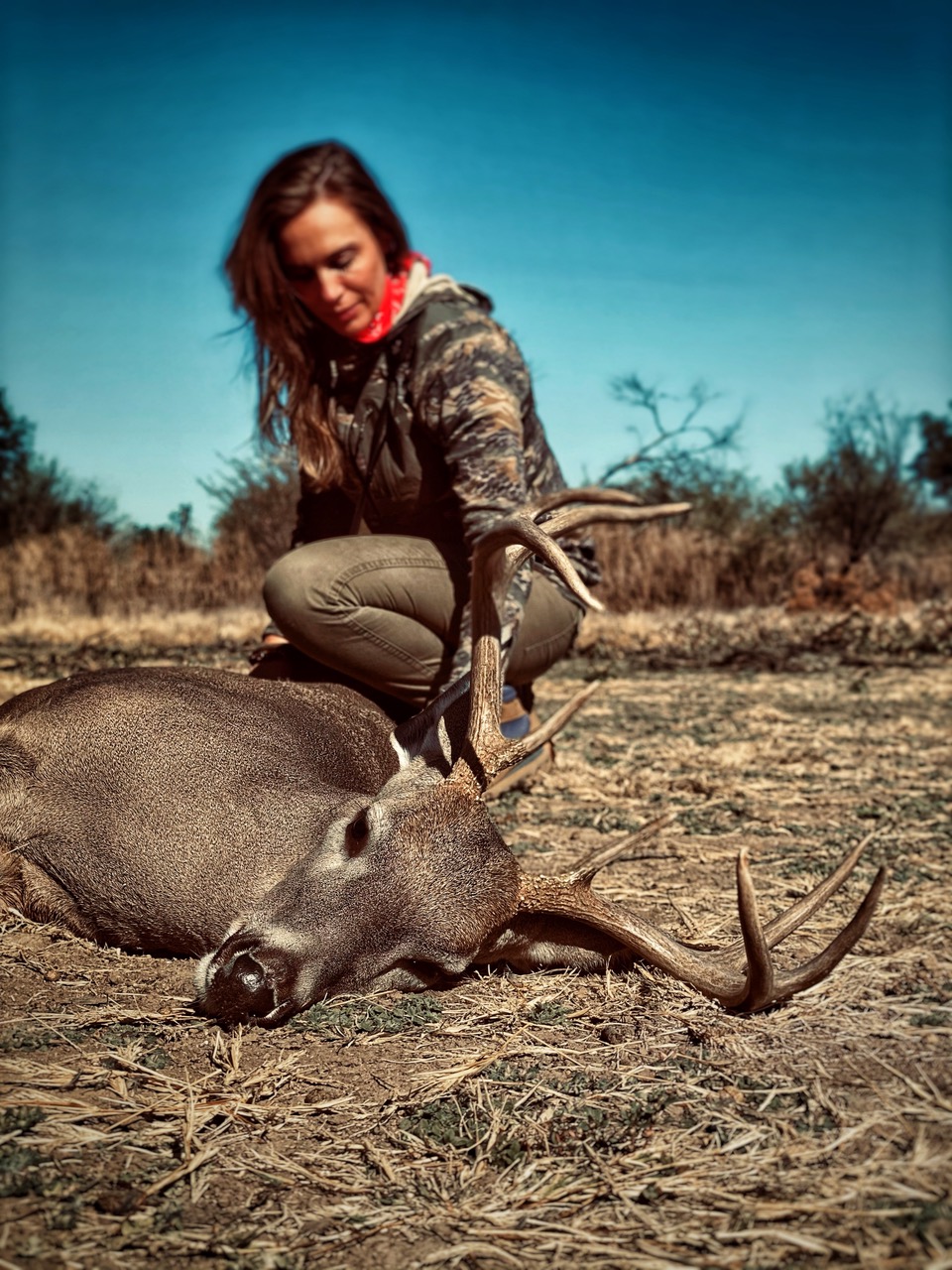
Once I was satisfied with the images, we loaded the buck up unceremoniously to bring him back to the headquarters. Mundo, one of the old vaqueros, rode a tractor on the ranch road and saw the buck in the back of the pickup. He waved his hands and, in accented English, exclaimed, "Good, good!" and swung his tractor around to follow us back to help with the skinning and butchering of the carcass. We unloaded the deer under a massive fig tree, strung him up by his back legs. The ranch mongrel dogs scurried over to us and hoped for a handout of the trimmings. We saved the backstraps and tenderloins for camp meat and gave the rest to the vaqueros and family.
The vaqueros make the equivalent of $350 per month and get free rent to live and work the landowner’s cattle. They supplement their income with milking and making queso fresco cheese from the cows and sell the cheese blocks in the neighboring rural towns. I sat on the roots of the ancient tree, watched the deer's skinning and butchering. I made friends with the old vaquero, who later invited me to see how he made the cheese later that afternoon.
The creamery was a small brick shed with rusted screens on two sides, which allowed the air to flow freely throughout. There was a large yellow tub of fresh milk. We added an emulsifier to quicken the process that separated the curd and whey. After a few hours, the curds and whey were scooped into a large plastic grain feed sack that acted as a sieve and drained off the excess whey. The drain funneled into a plastic trough outside that the ranch dogs drank from. The curds rested and continued to drain in the feed sack for another three hours when I was fetched from the hacienda to come to work more. Mundo and I dumped the moist curds into the plastic tub. He showed me how to work the lumps out with the palms of my hands, pressing them into the sides of the tub for about twenty minutes until my hands cramped and the curd was smooth, almost the texture of crumbly cream cheese. We added a bit of salt to taste, then lined a well-used cheese form with orange-stained cheesecloth. The cloth's edges were frayed and dark spots of mold forming, making it seem a bit unsanitary, but I complied with a smile. Mundo showed me how to press the smooth curd edges into the wood form's sides. Then I leveled off the top and folded the highly questionable cheesecloth neatly, and applied a square board to cover the form. Added a heavy stone to the top and finito. Overnight, ten hours later, the soft queso fresco was ready!
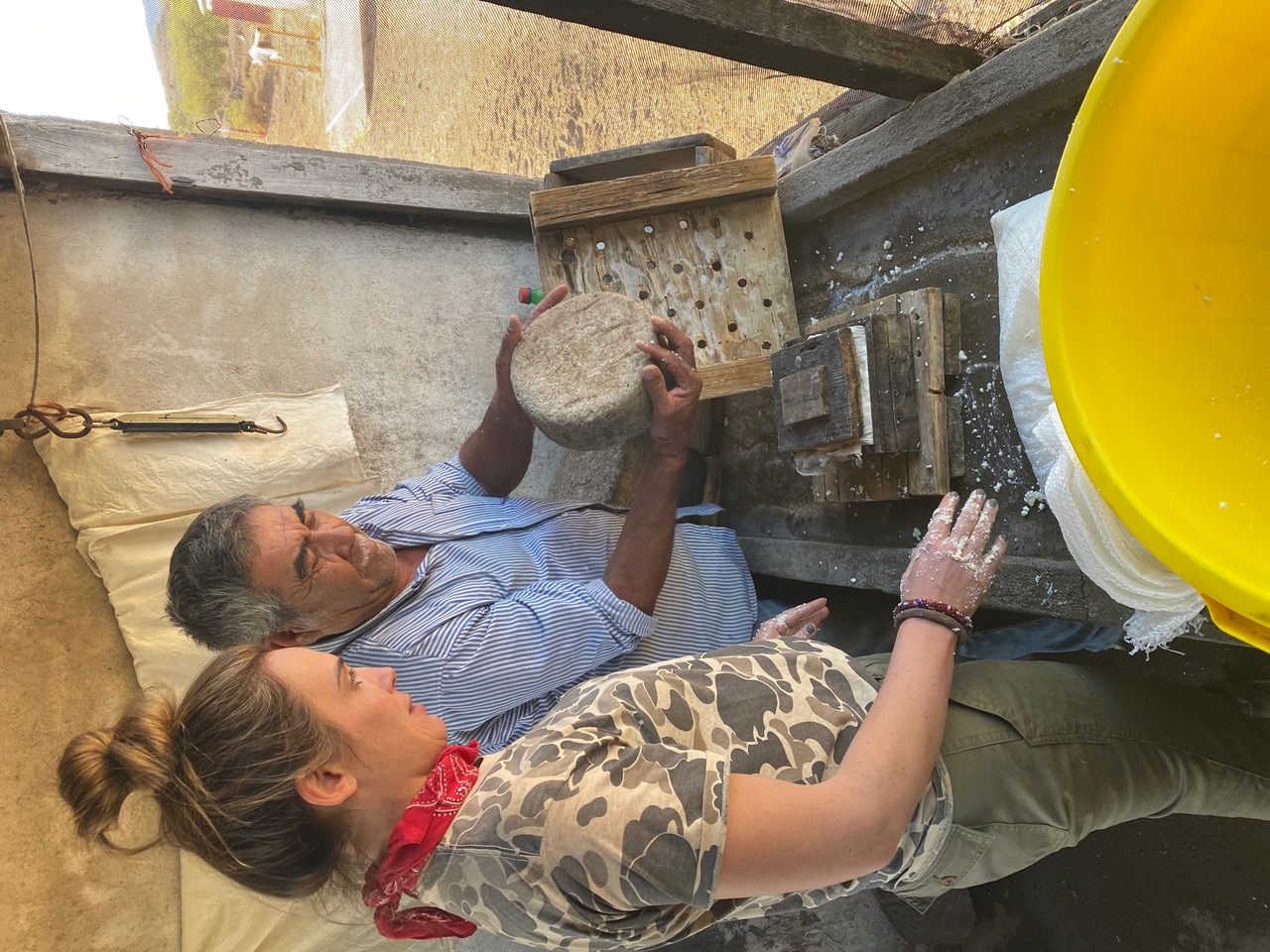
I rejoined Ricardo a few more times in the blind and on late afternoon glassing missions in hopes of a spot and stalk opportunity with my hunt over. On the last day, I opted to stay at the hacienda, writing, reading, editing my photos, and drinking coffee with the camp cooks. In the afternoon, I got out of them the secrets to their yellow salsa we had enjoyed throughout the week. The yellow salsa was made from ten yellow hot peppers, with seeds removed, the peppers in boiling water for about five minutes until they start to fall apart. Remove the softened peppers, place them into a blender, add the juice of six small lemons, blend with 1/3 cup of chicken broth, use more or less broth for desired consistency, and add salt and pepper to taste. It is the perfect combination of tanginess and spicy heat. The final evening together, we enjoyed a meal of Coues deer liver and tenderloins roasted on the fire, yellow salsa, queso fresco, and washed it down with a bit of tequila as we toasted to the hunt, new friends, and great memories on this Mexican hunt for Coues deer.
Ward’s Outfitters has been family owned and operated since 2005. They are based out of Arizona and specialize in archery hunts for mule deer and elk in Arizona and Northern Mexico. Dennis Ward, Steven’s father, was the developer of Vortex expandable broadheads and is considered a pioneer in the archery community. For more information, visit www.wardsoutfitters.com.
